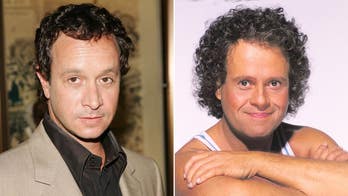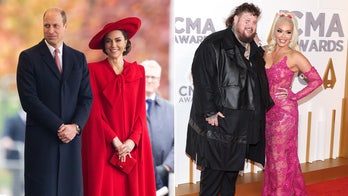
A scene from 'The Princess Diaries,' a G-rated film which a study says has 42 seconds of sexual content. (Walt Disney)
LOS ANGELES – While it has long been assumed that risqué movies can cause risky behavior, there is now scientific data to back it up.
According to a new study conducted by psychological scientists at Dartmouth University, children who watch features films with sexual content have a tendency to start having sex at a younger age, have more casual sexual partners, and engage in unsafe sexual practices.
Using 1,228 participants aged 12-14, the study – entitled “Greater Exposure to Sexual Content in Popular Movies Predicts Earlier Sexual Debut and Increased Risk Taking” – has raised renewed concern over the potentially dangerous affect Hollywood has on adolescents. What many have found particularly disturbing is that the sexual content is not only limited to R-rated films. Researchers found that 68 percent of G, 82 percent of PG, and 85 percent of PG-13 rated movies of the 684 movies included in the study contained sexual situations.
“Impressionable children and teens are influenced by the media they consume. Over 60 years of research and over 3,000 studies now have linked violent media content and aggression, cigarette smoking in films and the likelihood teens will take-up smoking, and more recently, exposure to sexual content in entertainment and early onset of sexual activity in teens,” Melissa Henson, Director of Communications and Public Education at the Parents Television Council (PTC), an organization that monitors connections between a child’s media consumption and their behavior, told FOX411’s Pop Tarts column.
Before recruiting participants, the authors coded the movies for seconds of sexual content, which was defined as any sexual act, from passionate kissing all the way to intercourse. G-rated movies like “The Princess Diaries” contained 42 seconds of sexually-related material, PG-13 movie “Meet Joe Black” had 170 seconds, while another PG-rated movie “My Big Fat Greek Wedding” had 78 seconds.
So why do these films have such a profound impact on adolescents?
The study noted that a personal trait predominant in those aged 10-15 is “sensation seeking,” in which adolescents seek out all kinds of intense stimuli. Combine this behavior with “wild hormone surges,” and the researchers discovered that movie sex induced a higher peak in sensation seeking.
“I found that the most surprising part of these results were that adolescents who viewed more sexual content from movies reported higher sensation seeking during their teenage years,” explained one of the authors, Ross O’Hara. “Not only did this higher level of sensation seeking predict an earlier age of sexual debut and riskier sexual behavior, but could have important implications for other risk behaviors, like alcohol use or smoking.”
And while totally shielding children from impact of the entertainment industry is virtually impossible, there are steps parents can take to reduce risks associated with watching risqué movies.
“First, monitor the content of movies that children watch, both in theatres and through other outlets, such as TV and the Internet,” O’Hara advised. “Second, discuss the sexual events portrayed in films with your children when they see them. We as adults know what elements of sex scenes are unrealistic or omitted, but we need to relay that information to young people who might not understand how that scene differs from real life.”
Caroline Knorr, parenting editor, Common Sense Media too stressed the importance of parents not shying away from such important topics with their young ones.
"As parents, what we can do is talk to kids about those images and try to challenge the exaggerated notions of sex they see every day. When it comes to TV and movies, the there are two points to stress to your kids,” she added. “The first is R-E-S-P-E-C-T. Kids can learn a lot about how to treat the opposite sex when they see examples of respectful relationships. And the second point is consequence. Are these actions done without consequence? Or is there at least discussion about them? A show or a movie that includes sexual situations but pairs them with frank discussions of the consequences that come with it, can actually be great a teaching tool about safe, responsible, and healthy sexual lives and relationships."






